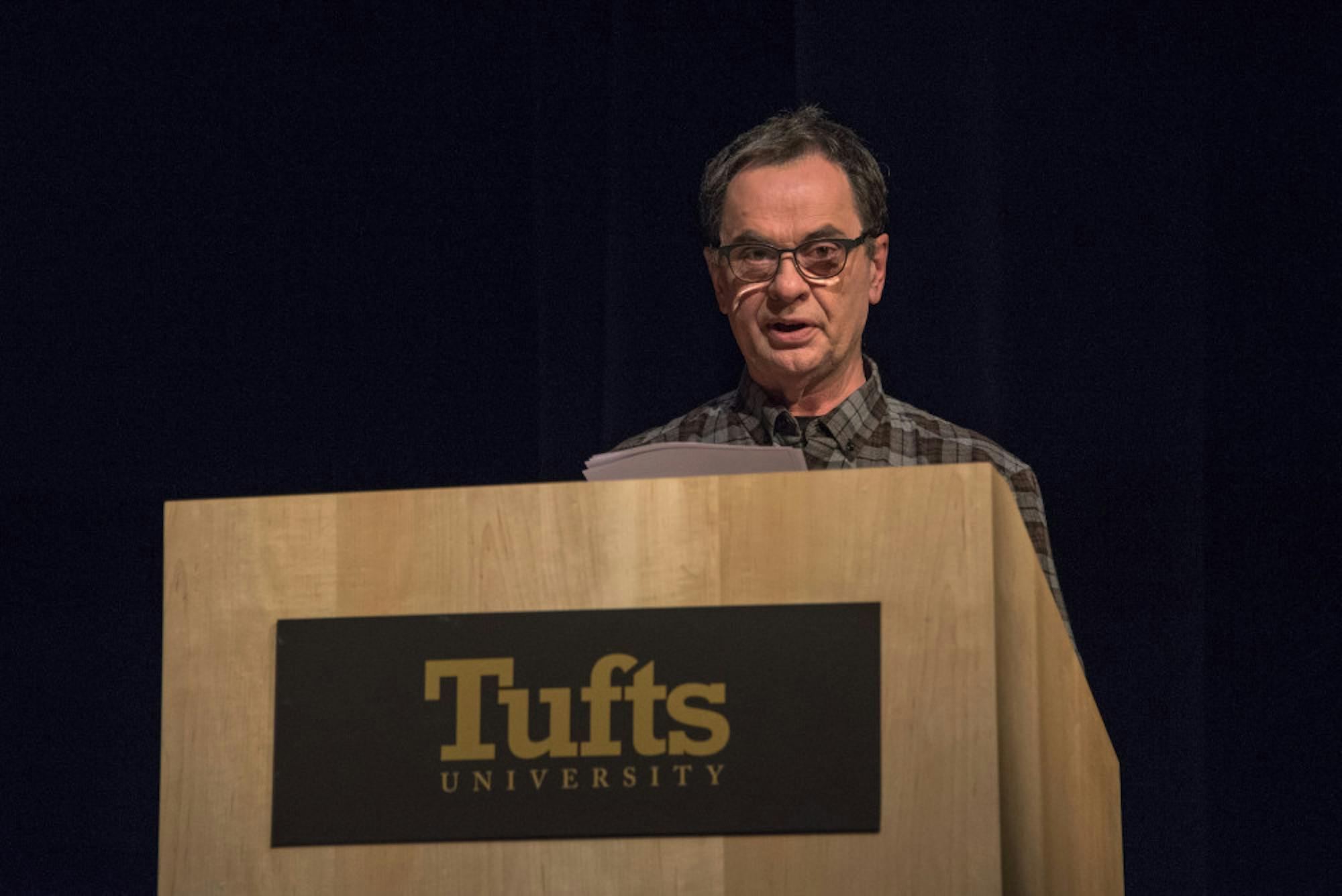Gerhard Steidl, among the world's most respected printers and publishers and the founder of the German publishing company Steidl, spoke about the beauty of analogue books in the digital era and explored his inspiration and process as a bookmaker at an event last week.
The talk, entitled "Print is not dead. The Beauty of Analogue Media in the Digital World," took place in Cohen Auditorium on Thursday night. Approximately 70 faculty, university staff and members of the local photography community attended the talk,which was followed by a question-and-answer session and an informal reception.
According to Tisch Library Interim Director Dorothy Meaney, Steidl visited the campus for the installation of “Robert Frank: Books and Films, 1947–2017” and offered to give a talk during the course of his stay. The talk was sponsored by the Tisch Library in conjunction with Steidl, the Steve Tisch Family Foundation and the Richard Ehrlich Family Foundation.
Steidl began his talk by sharing his thoughts on the potential and the limitations of both the analogue and digital world.
Describing the potential of the digital format, he said, "[the] publishing of books on the internet, of course, has its advantages. It saves resources because almost no physical resource is required."
He added that digital publishing is more accessible to people and can be practical in certain situations. Steidl then described the limitations of digital publishing as a medium and argued that the text on the internet cannot serve the function of a printed book.
"Paper is patient ... Once it is printed it carries that information forever. This information documents the state of knowledge or static position of a particular point of time," he said. "Such information cannot be deleted or overwritten ... You can always return to the book exactly as it was produced. Even when the book is destroyed the information lives ... among many copies of the [same] book."
In particular, Steidl mentioned the first edition of "Adventures of Huckleberry Finn" (1884) to discuss the durability of a printed book.
"Even a hundred years later, the original version of Mark Twain's '[Adventures of] Huckleberry Finn' sits unchanged on the book shelf."
Throughout the talk, he discussed how Johannes Gutenberg, his self-proclaimed role model, inspired him to become a printer and how he approaches the process of crafting a book.
Steidl ended the talk by describing his process of working with an artist and colleagues to produce the book at the publishing company he founded in 1972.
"My first question [to the photographer] is, no doubt: 'What is your vision of the book?' We then discuss the layout ... and begin with text and image corrections before making the test print of the book," he said. "For me, making test prints is the most wonderful experience. To set our big printing press without any time pressure and to play with different kinds of paper and ink."
In an interview with the Daily, Steidl advised students to work in groups to approach analogue media, because the practice of analogue art, especially photography, is often cost-prohibitive and labor-intensive for one person.
"The best is, from my point of view, to work in a group to make a workshop and find out all the techniques," Steidl said.
He also urged the students to engage with the act of reading a physical book and to appreciate the physical copy of a book as an art form.
"For studies and research and maybe for scientific work, the internet is a more practical way of reading, but ... there is also the technical level of reading. Do you want to study all day to read the text in the internet and then go home and do the same thing again? Isn't it nicer to have a book with poetry and read maybe just one poem or one page [everyday]?" he said. "Read it one time or three times a week... You have a totally different experience. It is something you have to learn... It's a luxury to read analogue books at home, and to look at visual books. It opens your mind and adds quality to your life."
Meaney, who worked with Steidl for the Robert Frank exhibition, expressed that she was inspired by the talk and its insight into the art of bookmaking.
"It is just fascinating to hear about the development of craft ... from someone who has really set the standard for [the process of book crafting] for so long," Meaney said.
Alison Nordström, an independent curator and former senior curator of photographs at George Eastman House from Cambridge, Mass., said she appreciated Steidl's commitment to the art of book making and passion.
"It was wonderful. I've had other encounters with Gerhard Steidl, and I've actually never seen him talk in a public forum like this, and it was marvelous to see how passionately he believes in what he does," Nordström said. "It is inspiring to see someone who is committed to quality and wakes up every morning happy to be what he is doing."
"We are lucky to have [Steidl] in the field. He makes the best books," she added.
World-famous publisher and artist Gerhard Steidl discusses the beauty of analogue media in digital world

Gerhard Steidl, world-renowned printer, publisher and artist, gives a talk during the event 'Print is not dead. The Beauty of Analogue Media in the Digital World' in Cohen Auditorium on Oct. 10.





